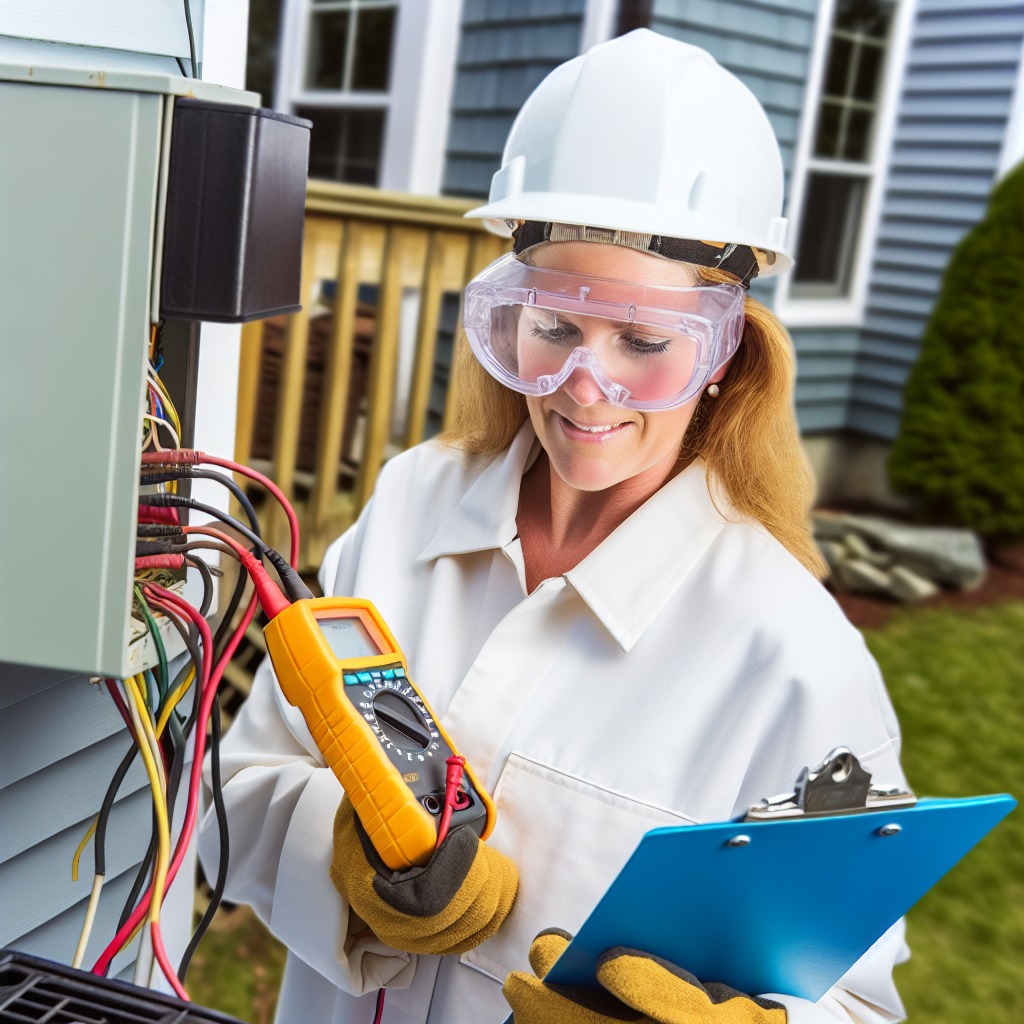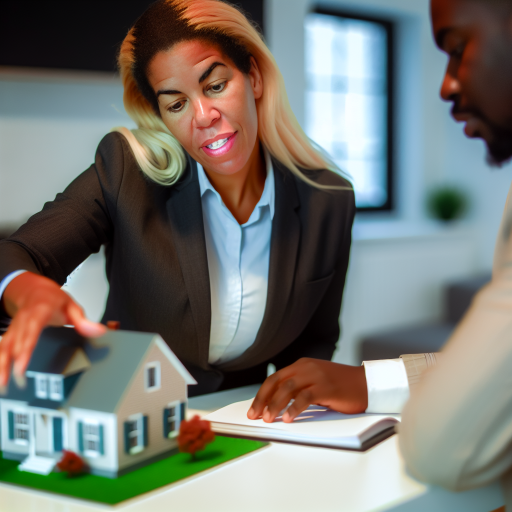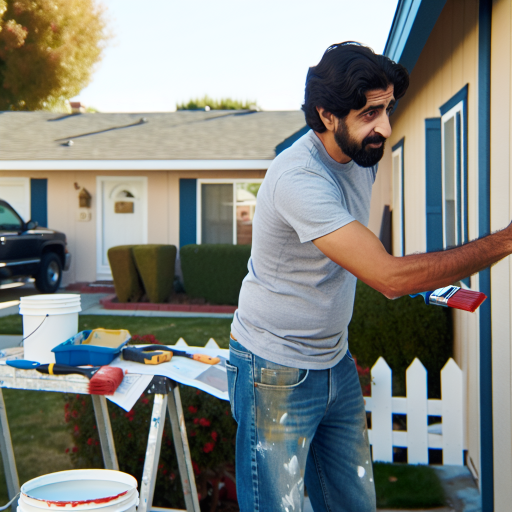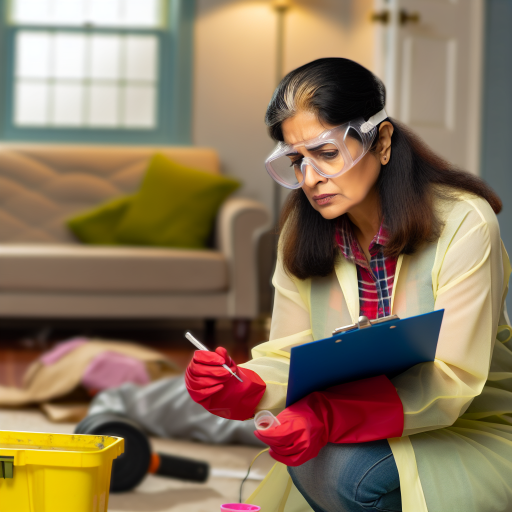Introduction to Home Inspection and Its Importance in Ensuring Safety Standards
Home inspection plays a crucial role in maintaining safety standards in residential properties.
It assesses the condition of a house before purchase, helping buyers make informed decisions.
Furthermore, it identifies potential hazards that may compromise safety and property value.
Inspectors evaluate various systems, including electrical, plumbing, and structural components.
Doing so, they ensure compliance with local building codes and regulations.
Additionally, a thorough inspection can save homeowners from costly repairs in the future.
By addressing issues early, homeowners can enhance safety and improve overall living conditions.
Many insurance companies also recommend home inspections to qualify for coverage.
This proactive approach protects investments and increases peace of mind for owners.
Overall, understanding the significance of home inspections is vital for current and prospective homeowners.
Essential Safety Components to Inspect During a Home Inspection
Structural Integrity
Begin by examining the foundation for any cracks or shifts.
Look for signs of water damage in the basement or crawl space.
Check the walls for bowing, cracking, or other deformities.
Inspect the roof for missing shingles or leaks.
Ensure that gutters and downspouts direct water away from the foundation.
Transform Your Real Estate Decisions
Unlock personalized real estate insights crafted just for you. Get actionable advice designed to amplify your success.
Get StartedElectrical Systems
Verify that the electrical panel has no rust or corrosion.
Check for proper labeling of circuit breakers.
Inspect the wiring for any exposed or frayed connections.
Ensure all outlets are grounded and functioning properly.
Pay attention to the presence of any GFCI outlets in wet areas.
Plumbing Systems
Examine pipes for leaks or signs of corrosion.
Check water pressure levels in various fixtures.
Inspect drains for slow flow or blockages.
Ensure that water heaters are functioning and not leaking.
Verify proper drainage away from the home’s foundation.
Heating and Cooling Systems
Check the furnace for age and signs of neglect.
Inspect the air conditioning units for clean filters and operational status.
Verify that vents are unobstructed and functioning properly.
Examine ductwork for leaks or poor insulation.
Showcase Your Real Estate Business
Publish your company profile on our blog for just $200. Gain instant exposure and connect with a dedicated audience of real estate professionals and enthusiasts.
Publish Your ProfileEnsure thermostat settings and functions are accurate.
Fire Safety Features
Confirm the presence of smoke detectors on each floor.
Test the functionality of all smoke detectors and replace batteries as needed.
Inspect fire extinguishers for proper charge and accessibility.
Ensure that escape routes from bedrooms are clear and available.
Examine the home for fire hazards, such as flammable materials near heat sources.
Environmental Hazards
Check for signs of mold, particularly in damp areas.
Test for radon levels, especially in basements.
Examine paint for lead in homes built before 1978.
Inspect for asbestos in older insulation materials.
Verify that crawl spaces have proper ventilation and no standing water.
Detailed Checklist for Electrical Safety Inspections
Inspecting Electrical Outlets
Check all electrical outlets for damage or wear.
Use a tester to ensure proper grounding.
Make sure that outlets are securely attached to the wall.
Verify that GFCI outlets are functional in wet areas.
Examining Circuit Breakers
Inspect the main electrical panel for rust or corrosion.
Check that breakers are clearly labeled for circulation.
Test breakers to ensure they trip and reset properly.
Look for any signs of overheating in the panel.
Evaluating Wiring Conditions
Look for frayed cords or exposed wires throughout the home.
Ensure all wiring serves its purpose without overload.
Check connections for any loose or damaged wires.
Inspect overhead wiring for sagging or damage.
Assessing Lighting Fixtures
Confirm that all light fixtures are securely mounted.
Check light bulbs for compatibility with fixtures.
Ensure adequate lighting is available in essential areas.
Replace any flickering bulbs promptly to avoid hazards.
Verifying Smoke and Carbon Monoxide Detectors
Test all smoke detectors to ensure functionality.
Replace batteries as recommended to maintain operation.
Verify the presence of carbon monoxide detectors near sleeping areas.
Showcase Your Real Estate Business
Publish your company profile on our blog for just $200. Gain instant exposure and connect with a dedicated audience of real estate professionals and enthusiasts.
Publish Your ProfileCheck expiration dates on all detectors and replace if necessary.
Reviewing Electrical Appliances
Inspect appliances for any visible damage or frayed cords.
Ensure proper use of extension cords, avoiding multiple connections.
Check all appliances for recall status and safety compliance.
Encourage regular professional inspections of large appliances.
Learn More: Home Inspection Checklist For Spotting Potential Mold And Water Damage
Plumbing Systems Considerations
Checking for Leaks
Start by inspecting all visible pipes in the basement and crawl spaces.
Look for signs of moisture or water stains on the walls.
Pay attention to the connections of fixtures and toilets.
Check under sinks for any ongoing leaks.
Make sure to assess water pressure in faucets and showerheads.
Additionally, examine any exposed plumbing during your checks.
Identifying Safety Risks
Examine the overall condition of the plumbing system.
Ensure all pipes meet current standards, particularly for materials.
Verify that there are no lead pipes in use.
Inspect for rust or corrosion on metal pipes.
Look for any potential hazards near hot water heaters.
Assessing Drainage and Water Flow
Test all sinks, showers, and bathtubs for proper drainage.
Listen for gurgling sounds that may indicate blockages.
Ensure all drainage is flowing freely without obstructions.
Consider applying a dye test to check for hidden leaks.
Evaluating Sewer Systems
Inspect the main sewer line for blockages and backups.
Use a video inspection service for thorough checks when necessary.
Be alert to any signs of sewage odors in and around the home.
Review the location of the sewer line relative to tree roots.
Understanding Venting Systems
Check that all plumbing fixtures have venting systems in place.
Examine vent pipes to ensure there are no blockages.
Evaluate the location of vents to prevent any issues.
Consider consulting a plumbing professional for complex systems.
See Related Content: Understanding Mortgage Options For First-Time Homebuyers In The USA
Showcase Your Real Estate Business
Publish your company profile on our blog for just $200. Gain instant exposure and connect with a dedicated audience of real estate professionals and enthusiasts.
Publish Your ProfileFoundation and Structural Integrity: What to Look For
Visual Inspection of the Foundation
Start by inspecting the foundation for cracks or gaps.
Look for signs of water damage or moisture accumulation.
Examine the perimeter for uneven settling or shifting.
Also, check for signs of erosion around the foundation.
Materials and Construction Quality
Evaluate the materials used in the foundation.
Concrete should be solid and free of significant flaws.
Inspect for signs of bowing or leaning in walls.
Also, look for any signs of rust on metal components.
Interior Structural Elements
Observe interior walls for cracks or bulges.
Check door frames and windows for misalignment.
Ensure that beams and columns are sturdy and upright.
Additionally, assess floor joists for sagging or damage.
Roof Structural Integrity
Examine the roof for missing shingles or tiles.
Inspect for sagging or uneven roof lines.
Look for water stains on ceilings or walls.
Check attic spaces for signs of leaks or pest infestations.
Professional Inspection
Consider hiring a professional for a thorough assessment.
Qualified inspectors can identify hidden issues.
They provide detailed reports on structural integrity.
Ultimately, their expertise can help ensure safety.
Explore Further: Importance Of Roof Evaluation Within An Effective Home Inspection Checklist

Fire Safety Measures
Smoke Detectors
Smoke detectors are essential safety devices in any home.
They provide crucial alerts in case of a fire.
Check that smoke detectors are installed in every sleeping area.
Also, ensure there is one on every level of the home.
Test smoke detectors monthly to confirm proper functionality.
Replace the batteries at least once a year.
Consider replacing detectors every ten years for maximum safety.
Carbon Monoxide Alarms
Carbon monoxide alarms are vital for detecting harmful gas levels.
Install these alarms outside bedrooms and on every floor.
Showcase Your Real Estate Business
Publish your company profile on our blog for just $200. Gain instant exposure and connect with a dedicated audience of real estate professionals and enthusiasts.
Publish Your ProfileRegularly test the alarms to ensure they work effectively.
Change the batteries in carbon monoxide alarms as recommended.
Replace the alarms every five to seven years as a precaution.
Exits and Egress
Ensure all exits are easily accessible in case of an emergency.
Check that doors and windows open smoothly and are not obstructed.
Verify that each sleeping area has at least two exits.
Clearly mark pathways to exits with illuminated signs if necessary.
Consider creating a family fire escape plan for practice.
Regularly review the escape plan to ensure everyone is familiar.
Discover More: What To Expect During The Closing Process As A First-Time Homebuyer
Outdoor Safety Inspections
Assessing Decks
Start by examining the structure of the deck.
Check for loose or rotting boards that could pose risks.
Next, ensure that railings are sturdy and secure.
Inspect the connection between the deck and the house.
Make sure that no sharp edges are present on deck surfaces.
Finally, verify that the deck is free from clutter that could cause tripping.
Evaluating Pools
Begin with checking the pool’s fencing for security.
Ensure gates are self-closing and self-latching.
Inspect the pool surface for any cracks or sharp objects.
Check for proper signage indicating safety rules.
Make sure lifesaving equipment is easily accessible.
Lastly, evaluate the pool’s water quality and clarity.
Inspecting Landscaping Hazards
Assess the yard for any uneven surfaces or holes.
Look for potential tripping hazards like roots or stones.
Verify that pathways are clear and free from debris.
Inspect for low-hanging branches that could be dangerous.
Check if landscaping materials are safe and non-toxic.
Additionally, ensure proper drainage to prevent flooding.
General Safety Considerations
Always use safety gear while performing inspections.
Stay vigilant for any nearby electrical hazards.
Showcase Your Real Estate Business
Publish your company profile on our blog for just $200. Gain instant exposure and connect with a dedicated audience of real estate professionals and enthusiasts.
Publish Your ProfileEducate family members about outdoor safety measures.
Consider hiring a professional for comprehensive evaluations.
Regular inspections will help maintain a safe outdoor environment.
Final Steps: Creating an Action Plan Based on Inspection Findings
Reviewing the Inspection Report
Begin by thoroughly reviewing the inspection report.
Identify critical safety issues that require immediate attention.
Highlight areas needing repair or further evaluation.
Prioritize these issues based on potential risks.
Developing a Repair Strategy
Create a list of necessary repairs and improvements.
Assign specific tasks to qualified professionals.
Consider contacting trusted contractors in your area.
Obtain multiple quotes to compare pricing and services.
Establishing a Timeline
Set a realistic timeline for completing each repair.
Ensure the timeline accommodates your schedule and urgency.
Communicate expected completion dates with your contractors.
Adjust the timeline as needed based on progress.
Budgeting for Repairs
Calculate the overall cost for all repairs and improvements.
Include potential costs for unexpected issues.
Consider setting aside a contingency fund for emergencies.
Review your financial situation and adjust your budget accordingly.
Safety Follow-Up
Schedule follow-up inspections to verify completed work.
Seek additional evaluations if new concerns arise.
Maintain clear communication with your contractors.
Document all completed repairs for future reference.
Educating Household Members
Share key findings from the inspection with your family.
Educate them on safety measures and changes made.
Encourage everyone to report new safety issues promptly.
Regularly review safety protocols with household members.
Additional Resources
Permits & Inspections | California Department of Housing and …




